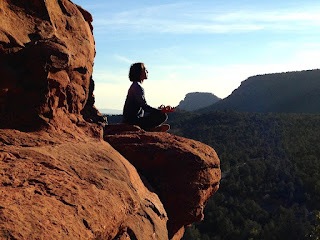Meditation Techniques, Benefits, and a Beginner’s How-to
How To Meditate Effectively with Guided Meditation Tips for Beginners
Embarking on your meditation journey might seem daunting at first, but with the right guidance, it becomes an enriching experience that fosters peace and mindfulness. Here are some foundational tips tailored specifically for beginners using guided meditation:
Understand the Basics Start by learning what meditation is and isn’t. Meditation involves observing your thoughts and feelings from a distance, without judgment. Guided meditation, in particular, helps you focus and navigate this process through verbal cues from an instructor.
Choose Your Guide Wisely Select a guided meditation that resonates with you. There are many voices and styles out there—some may include nature sounds or music, while others might be just spoken word. Experiment with different types to find one that you feel comfortable with.
Prepare Your Space Prepare a conducive environment for meditation. This doesn’t necessarily mean complete silence, but rather a place where you can be uninterrupted for the duration of your session. Comfort is key, so arrange cushions or a chair in a way that supports your posture.
Set an Intention Before you begin, set a simple intention for your meditation session. This could be something like seeking calmness, reducing anxiety, or simply being present. Intentions help guide your practice and focus your mind.
Practice Regularly but Be Flexible Aim for regular practice, but be flexible about when and how long you meditate. Starting with even 5-10 minutes a day can be beneficial. As you grow more accustomed to the practice, you can gradually extend the meditation duration.
These initial steps will help you gain confidence in your ability to meditate and ensure that your practice is built on a solid foundation. With guided meditation, you have the support of an experienced voice to lead you through the process, making it easier to maintain focus and persistence

Benefits that are associated with learning how to meditate
Meditation offers a wide range of benefits that can enhance both your physical and mental health, making it an invaluable practice for beginners to adopt. Here’s a closer look at some of the key benefits you can expect from regular meditation:
Reduces Stress and Anxiety
One of the most celebrated benefits of meditation is its ability to significantly reduce stress and anxiety. By focusing on the present and practicing mindful breathing, you can calm your mind, reduce cortisol levels, and alleviate stress.
Enhances Focus and Concentration
Meditation trains your brain to focus on the present moment, which can dramatically improve your attention span and concentration. Regular practice can help you stay centered and sharp, even during hectic times.
Improves Emotional Well-being
Meditating regularly helps in managing emotions, enhancing self-awareness, and increasing patience and tolerance. It can lead to a better understanding of yourself and how you relate to those around you.
Boosts Immune Health
Research has shown that meditation can improve the immune system, making you less susceptible to infections and diseases. By reducing stress, which is often a hindrance to immune function, meditation helps in maintaining overall health.
Supports Better Sleep
Meditation can also be a powerful tool for combating insomnia and improving the quality of sleep. It helps by calming the mind and body, preparing you for restful sleep, and reducing the time it takes to fall asleep.
Understanding these benefits can motivate beginners to integrate meditation into their daily routine, reaping its myriad advantages. As you progress in your practice, you may discover even more personal gains that resonate with your specific lifestyle and needs.

A Step-by-Step Guide to Basic Mindfulness Meditation
For those new to meditation, mindfulness meditation offers a simple and effective way to begin. Here’s a straightforward, step-by-step guide to help you understand and practice basic mindfulness meditation:
1. Find a Comfortable Place to Sit
Choose a quiet and comfortable place where you won’t be disturbed. You can sit in a chair with your feet on the floor, on a cushion cross-legged, or even lie down if that’s more comfortable.
2. Set a Time Limit
If you’re just beginning, it might help to choose a short time, such as five or ten minutes. As you get used to meditating, you can gradually increase the duration.
3. Notice Your Body
Once you’re settled in, take a moment to notice your body. You can close your eyes or keep them slightly open, and feel your body’s weight and how it contacts the seat or floor. Ensure your back is straight but not stiff.
4. Feel Your Breath
Pay attention to the physical sensation of breathing: the air moving through your nose or mouth, the rising and falling of your belly, or your chest.
5. Notice When Your Mind Has Wandered
Inevitably, your attention will leave the breath and wander to other places. When you get around to noticing that your mind has wandered—in a few seconds, a minute, five minutes—simply return your attention to the breath.
6. Be Kind to Your Wandering Mind
Don’t judge yourself or obsess over the content of the thoughts you find yourself lost in. Just come back.
7. Close with Kindness
When you’re ready, gently lift your gaze (if your eyes were closed, open them). Take a moment to notice any sounds in the environment. Notice how your body feels right now. Notice your thoughts and emotions.
This basic practice of mindfulness meditation can help stabilize your thoughts and bring about a sense of calm and focus. It’s an excellent starting point for any beginner and can be a gateway to deeper meditation practices.

When the Mind Wanders
It’s normal and expected that your mind will wander during meditation. This doesn’t mean you’re doing it wrong—it’s just the nature of the mind. Here’s how to handle this common occurrence:
Recognize the Wandering
The first step is to simply notice when your mind has wandered. This recognition is a crucial part of the practice; it reflects your growing awareness.
Don’t Judge Yourself
Avoid criticizing yourself when your mind wanders. Meditation isn’t about having a blank mind, but about noticing where your mind goes without judgment.
Gently Redirect
Once you realize you’ve lost focus, gently redirect your attention back to the breath or your chosen focus point. This act of returning to your meditation is where the real training occurs.
Practice Makes Perfect
Every time you bring your attention back, you strengthen your meditation muscles. It’s this repetition that builds your ability to focus and stay present.
Use a Soft Mental Note
Sometimes, it helps to label the distractions as “thinking”, “noise”, or “feeling”. This can simplify the experience and make it easier to return to your meditation.
By understanding that wandering is part of the process, you can turn what seems like a hindrance into an opportunity for growth in your meditation practice.

Meditation Tips and Techniques
3 Guided Meditations for Beginners
Guided meditation can be an excellent way for beginners to start their meditation journey, providing a structured way to relax and find focus. Here are three guided meditations tailored specifically for those new to the practice:
1. Breath Awareness Meditation
This meditation focuses on the breath, a fundamental aspect of most meditative practices. The guide will instruct you to notice the inhale and exhale, helping to anchor your mind in the present moment. This type of meditation is perfect for cultivating concentration and calming the mind.
2. Progressive Muscle Relaxation (PMR)
PMR is a body-focused technique that involves tensing and then relaxing different muscle groups throughout the body. This practice is not only relaxing but also helps beginners become more aware of physical sensations and aids in releasing physical stress.
3. Loving-Kindness Meditation
Also known as Metta meditation, this involves mentally sending goodwill, kindness, and warmth towards others and oneself. It can be particularly beneficial for cultivating an attitude of compassion and empathy, which in turn can reduce feelings of isolation and anxiety.
These meditations can be found on various meditation apps, websites, or local classes, and they offer a guided experience that can help ease beginners into the practice by providing clear instructions and support.

A Basic Meditation for Advanced Meditators
While the foundation of meditation practice remains similar, advanced meditators often seek deeper or more nuanced techniques to enhance their practice. Here’s a basic meditation adapted for those who have some experience but wish to deepen their practice:
1. Mindful Breathing with Variations
Begin by grounding yourself in your usual mindful breathing technique. Once settled, introduce variations such as counting breaths or incorporating pauses between inhalation and exhalation. These subtle changes can help refine your focus and introduce new challenges to the practice.
2. Incorporate a Mantra
Select a mantra that resonates with you—a short phrase or a word that holds personal significance. Repeat the mantra silently as you meditate, allowing it to help deepen your concentration and enhance your spiritual connection.
3. Open Awareness Meditation
Instead of focusing on a single point, open your awareness to perceive all sensations without attachment. This includes sounds, smells, bodily sensations, and thoughts. The challenge is to remain detached and observe the flow of perceptions without getting involved.
4. Analytical Meditation
This technique involves deep contemplation on a topic or idea, such as concepts of love, impermanence, or compassion. It’s about actively engaging the mind in analytical thinking while maintaining a meditative state, which can lead to profound insights and emotional resolution.
5. Silent Retreats
Participating in a silent retreat can profoundly deepen your meditation practice. Extended periods of silence and meditation can lead to greater self-awareness and a more profound sense of inner peace.
These techniques are designed to push the boundaries of your regular meditation practice and can be especially rewarding for those looking to deepen their meditative experiences.

Meditation Exercises
To enhance your meditation practice and keep it engaging, incorporating a variety of exercises can be very beneficial, especially as you progress in your skills. Here are some effective meditation exercises tailored for both beginners and advanced practitioners:
1. Counting Breaths
This simple exercise involves counting your breaths up to ten and then starting again at one. It helps maintain focus and can be a great way to train your mind to stay present during meditation.
2. Visualization
Engage your imagination by visualizing a peaceful scene, such as a quiet beach or a serene forest. This technique not only helps in reducing stress but also strengthens your ability to concentrate and stay mentally alert during meditation.
3. Mindful Walking
This involves walking slowly and deliberately, paying close attention to the sensation of your feet touching the ground, the rhythm of your breath, and the sounds around you. It can be a refreshing alternative to seated meditation and is particularly effective in cultivating mindfulness in everyday activities.
4. Body Scan
Start at your toes and slowly move your attention up through your body, noticing any sensations, tensions, or discomforts. This exercise promotes body awareness and relaxation, making it easier to release stress during meditation.
5. Listening Meditation
Focus on listening to all the sounds around you—near or far, loud or soft, continuous or sporadic. This exercise helps sharpen your auditory skills and brings you into a deep state of present-moment awareness.
Integrating these exercises into your meditation routine can provide variety and enhance your overall practice, making it more enjoyable and effective.

How to Make Mindfulness a Habit
Making mindfulness a consistent part of your life involves more than just occasional meditation; it requires integrating mindful practices into your daily routine. Here’s how you can cultivate mindfulness as a habit:
1. Start Small
Begin with just a few minutes of mindfulness each day. It could be during your morning routine, on your commute, or as you wind down at night. The key is consistency, not duration.
2. Set Reminders
Use reminders to prompt you to engage in mindful moments. These could be set on your phone, sticky notes around your house, or regular appointments on your calendar dedicated to mindfulness.
3. Incorporate Mindfulness into Daily Activities
Choose regular activities during which you can practice mindfulness, such as eating, showering, or walking. Focus fully on the sensations and experiences of these activities without distraction.
4. Mindful Breathing Breaks
Introduce short, mindful breathing exercises into your day. Even one minute of focused breathing can reset your mind and reduce stress.
5. Reflect Daily
End your day with a few minutes of reflection. Consider what went well, what didn’t, and how you responded to different moments. This reflection can deepen your mindfulness and help you learn from each day.
6. Join a Community
Engaging with a community of like-minded individuals can provide support and motivation. Whether it’s a local meditation group, online forum, or a mindfulness class, being part of a community can enhance your practice.
7. Use Apps and Tools
There are numerous apps available that can help guide you through mindfulness exercises and track your progress. Tools like Headspace, Calm, or Insight Timer offer structured programs that can ease the formation of a mindfulness habit.
By following these steps, mindfulness can become a more natural part of your everyday life, leading to improved mental clarity, emotional balance, and overall well-being.

Mindfulness Meditation Practices
Mindfulness meditation is a powerful tool that can enhance your awareness, reduce stress, and improve mental clarity. Here are some practices to incorporate into your mindfulness meditation routine:
1. Focused Attention Meditation
This practice involves focusing on a single point. This could be your breath, a mantra, or even a specific object. The goal is to practice bringing your attention back to your focus point whenever you notice your mind has wandered.
2. Observation of Thoughts
Allow your thoughts to flow freely, without judgment or attachment. Observe them as if they were clouds passing in the sky, noting their presence but not holding on to them. This helps develop a detachment from intrusive thoughts and emotions.
3. Body Sensations
Pay close attention to different parts of your body and any sensations you feel. This could be done through a formal body scan meditation or by simply paying attention to the sensations of your feet as you walk or your hands as you work.
4. Mindful Listening
Engage in active listening during your day. This means fully focusing on the person speaking without planning your response or judgment. This practice can be extended to listening to nature sounds, music, or even the general hustle and bustle of life around you.
5. Mindful Eating
This involves eating slowly and savoring each bite, paying attention to the texture, taste, and sensations of eating. Mindful eating is not only pleasurable but can also help improve digestion and reduce overeating.
Integrating these practices into your daily routine can help you maintain a state of mindfulness throughout your day, not just during designated meditation times. This continual practice enhances the benefits of mindfulness, making it a valuable tool for mental and emotional health.

Body Scan Meditation
Body scan meditation is a popular mindfulness technique that helps you develop a deeper awareness of your physical body and can be a soothing practice for stress relief. Here’s how to perform a body scan meditation effectively:
1. Find a Comfortable Position
You can perform a body scan lying down, sitting, or in any position that is comfortable for you. Ensure your environment is quiet and free from interruptions.
2. Start with Deep Breathing
Begin by taking several deep, slow breaths. This helps relax your body and focus your mind.
3. Focus on Your Feet and Work Your Way Up
Start your attention at your feet. Notice any sensations you feel—warmth, coolness, tingling, or maybe nothing at all. Gradually move your focus up to other parts of your body—legs, hips, abdomen, chest, hands, arms, shoulders, neck, and finally the head.
4. Notice and Release Tension
As you focus on each body part, note any areas where you detect tension or discomfort. Don’t try to change these sensations; simply acknowledge them. Imagine breathing into them, letting them relax and soften with each exhale.
5. Move at Your Own Pace
Take your time with each part of your body. You might spend a few breaths on some areas and longer on others. The key is to be thorough and move at a pace that feels right for you.
6. End with a Moment of Gratitude
Once you have scanned your entire body, take a few moments to breathe deeply and thank yourself for dedicating time to your well-being. Feel the full presence of your body and the calmness of the mind.
Body scan meditation can be particularly effective before sleeping or whenever you need to relieve stress. It promotes not only relaxation but also a profound connection between the mind and body.

1-Minute Meditation
Incorporating meditation into a busy schedule can seem daunting, but even one minute of focused attention can provide significant benefits. Here’s a simple guide to 1-minute meditation, perfect for beginners or anyone pressed for time:
1. Choose a Timer
Use a stopwatch or a timer on your phone to set aside exactly one minute for this practice. This helps you commit fully to the moment without worrying about the time.
2. Adopt a Comfortable Position
You can do this meditation sitting in a chair, standing, or even lying down. The key is to be comfortable so you can focus on the exercise rather than any physical discomfort.
3. Focus on Your Breath
Close your eyes and take a deep breath in through your nose, feeling your chest and belly expand. Exhale slowly through your mouth or nose, whichever feels most comfortable. Continue to breathe deeply and slowly.
4. Observe Your Thoughts
It’s natural for thoughts to arise during this minute. Instead of trying to block them out, simply notice them and let them pass, bringing your attention back to your breath each time.
5. Gently Return to Your Day
When the minute is up, gently wiggle your fingers and toes, open your eyes, and transition back to your day. Notice if you feel more relaxed and centered.
This quick and effective practice can be done at any time of the day, providing a brief respite from the hustle and bustle, and helping to reset your focus and reduce stress.

Introduction to the Walking Meditation
Walking meditation is a form of mindfulness meditation where movement guides the practice. It’s an excellent way for people who find sitting meditation challenging to incorporate mindfulness into their daily life. Here’s a basic introduction to walking meditation:
1. Choose Your Path
Find a quiet, safe place where you can walk back and forth or in a small circle. It doesn’t need to be a large area—a short hallway, garden path, or even a spacious room can work.
2. Start with Intention
Begin with setting an intention for your walking meditation. This could be as simple as wanting to be fully present during the walk or to cultivate peace.
3. Focus on Your Steps
As you start to walk, focus your attention on the sensation of walking. Feel each step as your foot lifts, moves through the air, and makes contact with the ground. Notice the subtle movements in your legs, hips, and arms as they assist in your walking.
4. Maintain a Slow Pace
Keep your walking pace slower than usual to help maintain focus and deepen awareness. Each step should be deliberate and mindful.
5. Use Breathing as an Anchor
Coordinate your breathing with your steps if possible. For instance, you might inhale for three steps and exhale for three steps. This helps keep your mind focused and prevents it from wandering.
6. Embrace the Surroundings
While the primary focus is on your movement and breath, allow yourself to become aware of the sounds, smells, and sights around you. Let these sensations enhance your meditation without pulling your attention too far from the movement.
7. Conclude with Reflection
After completing your walking meditation, stand still for a moment and reflect on the experience. How does your body feel? What is the state of your mind? Take a few deep breaths before returning to your day.
Walking meditation can be a refreshing and grounding practice, particularly useful for those looking for an active form of meditation. It promotes both physical and mental well-being, making it a versatile addition to your mindfulness practices.

Manage Expectations
When starting or deepening a meditation practice, managing your expectations is crucial for maintaining motivation and consistency. Here’s how you can set realistic expectations and avoid common pitfalls in meditation:
1. Accept That Progress is Non-linear
Understand that progress in meditation isn’t always linear or immediately noticeable. Some days will feel easier than others, and that’s perfectly normal. The key is to keep practicing regardless of the perceived difficulty or ease.
2. Embrace Moments of Discomfort
It’s natural to experience discomfort, whether physical or mental, during meditation. Rather than viewing this as a setback, see it as part of the learning process. These challenges can teach you a lot about your mind and body.
3. Set Achievable Goals
Rather than aiming for lengthy sessions right away, start with what feels manageable—whether that’s five minutes a day or ten minutes every other day. Gradually increase the duration as you feel more comfortable.
4. Focus on the Practice, Not the Outcome
Shift your focus from achieving a specific outcome (like complete relaxation or enlightenment) to simply engaging in the practice itself. The benefits of meditation often come indirectly and with time.
5. Use Tools and Support
Don’t hesitate to use tools like guided meditations, apps, or even books about meditation to help guide your practice. Joining meditation groups or classes can also provide support and motivation.
6. Celebrate Small Victories
Every time you come back to your breath after getting distracted, count it as a victory. These small moments of success are significant milestones in your meditation journey.
Setting realistic expectations helps ensure that your meditation practice is sustainable and enjoyable, reducing the risk of frustration and burnout. This approach allows you to appreciate the journey of meditation as much as the destination.

How to Start a Home Meditation Practice?
Establishing a home meditation practice can provide you with a consistent, convenient space to develop mindfulness and reduce stress. Here are some steps to help you set up and maintain a successful home meditation practice:
1. Designate a Meditation Space
Choose a specific area in your home that is quiet, comfortable, and free from distractions. This doesn’t need to be a large space—just a corner of a room where you can sit undisturbed.
2. Gather Essential Items
Consider adding items that enhance your meditation experience, such as a comfortable cushion or chair, a blanket, and perhaps some calming elements like a candle, incense, or a small statue.
3. Create a Routine
Decide on a time of day that works best for you and try to stick to it. Whether it’s early in the morning or late in the evening, having a consistent schedule helps reinforce the habit.
4. Keep It Simple
Start with just a few minutes each day. You can gradually increase the duration as your comfort with meditation grows. The key is to make meditation a non-intimidating, accessible part of your daily life.
5. Use Guided Meditations
If you’re just starting out, guided meditations can be very helpful. They provide direction and structure to your practice. There are many free and paid meditation apps and online resources available.
6. Involve Your Household
If you live with others, consider involving them in your practice or at least informing them of your meditation schedule to minimize disturbances.
7. Track Your Progress
Keeping a meditation journal or log can be useful for reflecting on your practice, tracking your progress, and maintaining motivation. Write down how you felt before and after each session, and any challenges or successes you encountered.
Establishing a home meditation practice is a rewarding way to invest in your mental health and overall well-being. It can be a sanctuary where you can retreat to find peace and regain balance in your life.

How long should I meditate?
Determining the optimal duration for meditation can vary widely from person to person, depending on lifestyle, goals, and experience. Here’s some guidance on how long you should meditate, especially as you establish or deepen your practice:
1. Start Small
If you’re new to meditation, start with short sessions of about 5-10 minutes each day. This is manageable for most people and less likely to feel overwhelming.
2. Gradually Increase Duration
As you become more comfortable with meditation, you can gradually extend your sessions. Many experienced practitioners aim for 20-30 minutes per session, but even extending to 15 minutes can have significant benefits.
3. Listen to Your Needs
The right length for your meditation also depends on your daily schedule and mental state. Some days you might find a longer session feels right, while other days even a few minutes could be enough.
4. Consistency Over Duration
It’s more beneficial to meditate regularly for shorter periods than to have long, infrequent sessions. Consistency helps build and maintain the meditation habit.
5. Experiment with Different Times
Some people find that meditating for a longer period once a week or practicing multiple short sessions throughout the day works best for them. Experiment to see what feels best for you and fits your lifestyle.
6. Adjust as You Progress
As your meditation practice deepens, you might find that you naturally wish to meditate for longer periods. Let this progression happen naturally without forcing yourself to stick to a set time before you’re ready.
Understanding and respecting your personal needs and limits is crucial in developing a sustainable meditation practice that grows with you. Let your comfort and experience guide how long each session should be.





